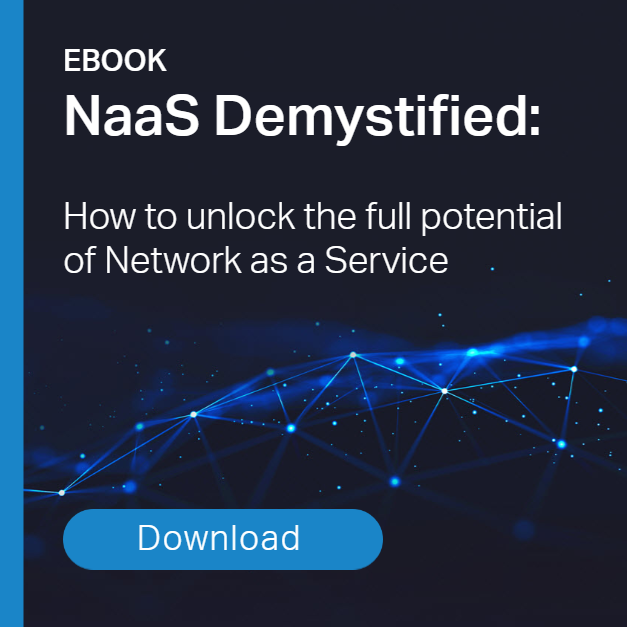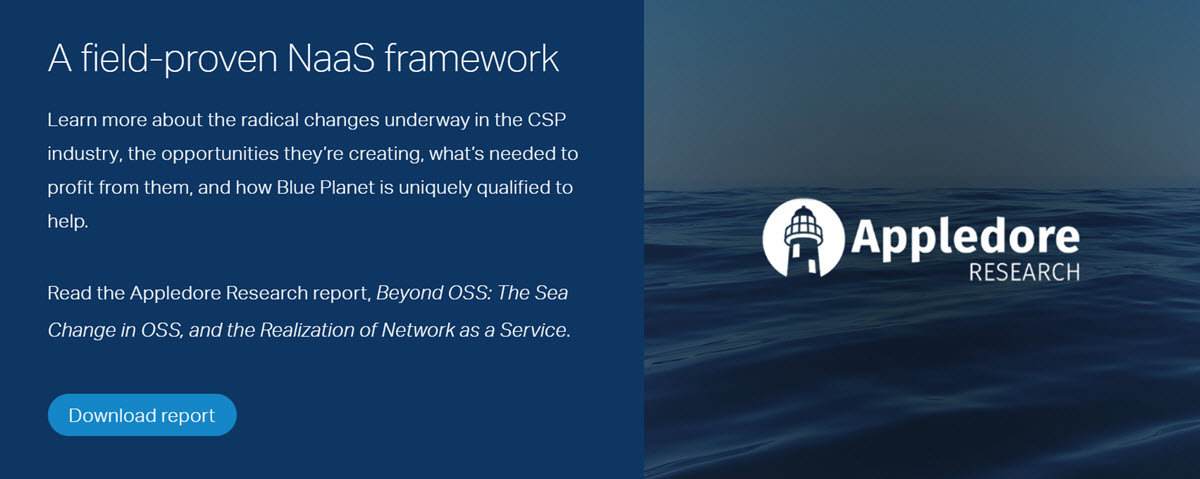Rethinking NaaS as a journey to openness and automation
What is Network as a Service (NaaS)? It’s a simple enough question, but there is a lot of confusion in the marketplace about the answer.
 Some common misconceptions or myths about NaaS are that it is just a new way for Communications Service Providers (CSPs) to sell virtualized services to enterprises, that its only about operations support system transformation through open and programmable APIs, or that it means the same thing as software-defined networking (SDN).
Some common misconceptions or myths about NaaS are that it is just a new way for Communications Service Providers (CSPs) to sell virtualized services to enterprises, that its only about operations support system transformation through open and programmable APIs, or that it means the same thing as software-defined networking (SDN).
Perhaps the biggest misconception, however, is that NaaS isn’t real – that it is a futuristic goal. While NaaS is, indeed, a ‘future state’ vision for CSPs, they can and are using it in production environments today.
I like to think of NaaS as an evolutionary journey toward a network, operations and business architecture that is open, agile and automated. Successful completion of this journey will result in digital transformation that allows CSPs to take back control of their networks, save on operational costs, increase innovation, accelerate time to market, and improve customer experience.
By using standards-based architectures and open APIs, NaaS provides common abstraction between the network, operations, and B/OSS layers, so that CSPs have a consistent way for these layers to ‘talk’ to each other. The BSS talks to the order management layer, and order management talks to services orchestration, which then communicates with various domains like the optical domain, a business service domain or the 5G domain.
Getting Rid of the Spaghetti
CSPs are all too familiar with the ‘spaghetti’ integration that has plagued their Business and Operations Support System (B/OSS) infrastructure. Traditionally, network domains and operational processes have been tightly coupled, which means that all new network elements must be integrated manually with B/OSS. Routine operational processes also involve people – technicians who access the B/OSS to gather information to design, activate and assure services.
This approach results in high costs, very slow time to market, and limited ability to scale. It cannot support cloud-based business models, on-demand services, or even new technologies like 5G.
By using standards-based architectures and open APIs, NaaS provides common abstraction between the network, operations, and B/OSS layers, so that CSPs have a consistent way for these layers to ‘talk’ to each other. The BSS talks to the order management layer, and order management talks to services orchestration, which then communicates with various domains like the optical domain, a business service domain or the 5G domain. This ultimately allows our CSP customers to eliminate the spaghetti integration, replacing it with an open, modular NaaS architecture that decouples the B/OSS and network.
A major benefit or byproduct of this transformation is that CSPs can deliver all kinds of new services to customers, from SD-WAN to wavelength services to 5G bandwidth on demand. They can even offer their customers self-service capabilities.
AT&T and Blue Planet worked together as part of a recent TM Forum Catalyst proof of concept to demonstrate these capabilities. The team showed how an enterprise customer could use a self-service portal to order a 100 Gigabit wavelength service connecting two US cities, and the results were impressive. AT&T concluded that adopting a NaaS architecture may reduce the time it takes to go from innovation to cash for optical wavelength services by 50%.
Building on SDN to Move Toward Automation
Another important outcome of the NaaS journey is that CSPs are able to fully embrace SDN capabilities to accelerate their automation initiatives. SDN enables network domains to be ‘programmed,’ or controlled centrally and intelligently using open interfaces to simplify traffic engineering and service provisioning. NaaS builds upon SDN, allowing service providers to modernize and automate operational processes such as order-to-service and trouble-to-resolve using orchestration, assurance, analytics, and policy control. NaaS puts CSPs on the path to realizing zero-touch service lifecycle automation, which is a key requirement for a wide range of edge computing and 5G use cases, from industrial IoT to autonomous vehicles.
Blue Planet worked with seven CSPs to demonstrate how this works in another TM Forum Catalyst proof of concept, showing how to use zero-touch service lifecycle automation to deliver Edge Compute as a Service (ECaaS). Again, the team was able to show how using standard reference architectures and APIs makes it possible for CSPs to implement NaaS and cut time to market in half.
Starting the Journey
The most important thing to understand about NaaS is that CSPs can begin this transformational journey today. Blue Planet is working with several CSPs to develop NaaS architectures. For example, we are helping Australian fibre provider Vocus implement an automated NaaS architecture that eventually will consolidate six networks and eight B/OSS stacks.
The company is adopting NaaS, NFV and SDN as part of its “Future State” strategy and is using the Blue Planet Intelligent Automation portfolio. While it will take Vocus several years to complete its three-phase transformation, the foundational platform is in place now, with dozens of sites already using Blue Planet Intelligent Automation.
Measuring Outcomes
Key for Vocus and all other CSPs is that they will see measurable benefits throughout their NaaS journeys. These include:
- Accelerated time to market for new services, which leads to new revenue
- Reduction in the cost of operations support and integration
- Lowering of the risk associated with adopting new technology and delivering new services
CSPs will have automated control over their network and operations environments, better visibility, and they will be able to troubleshoot problems easily. This will have a direct benefit in terms of improving customer care.
CSPs often think concepts like NaaS are abstract, but that, too, is a misconception. The benefits are measurable and quantifiable – today.


